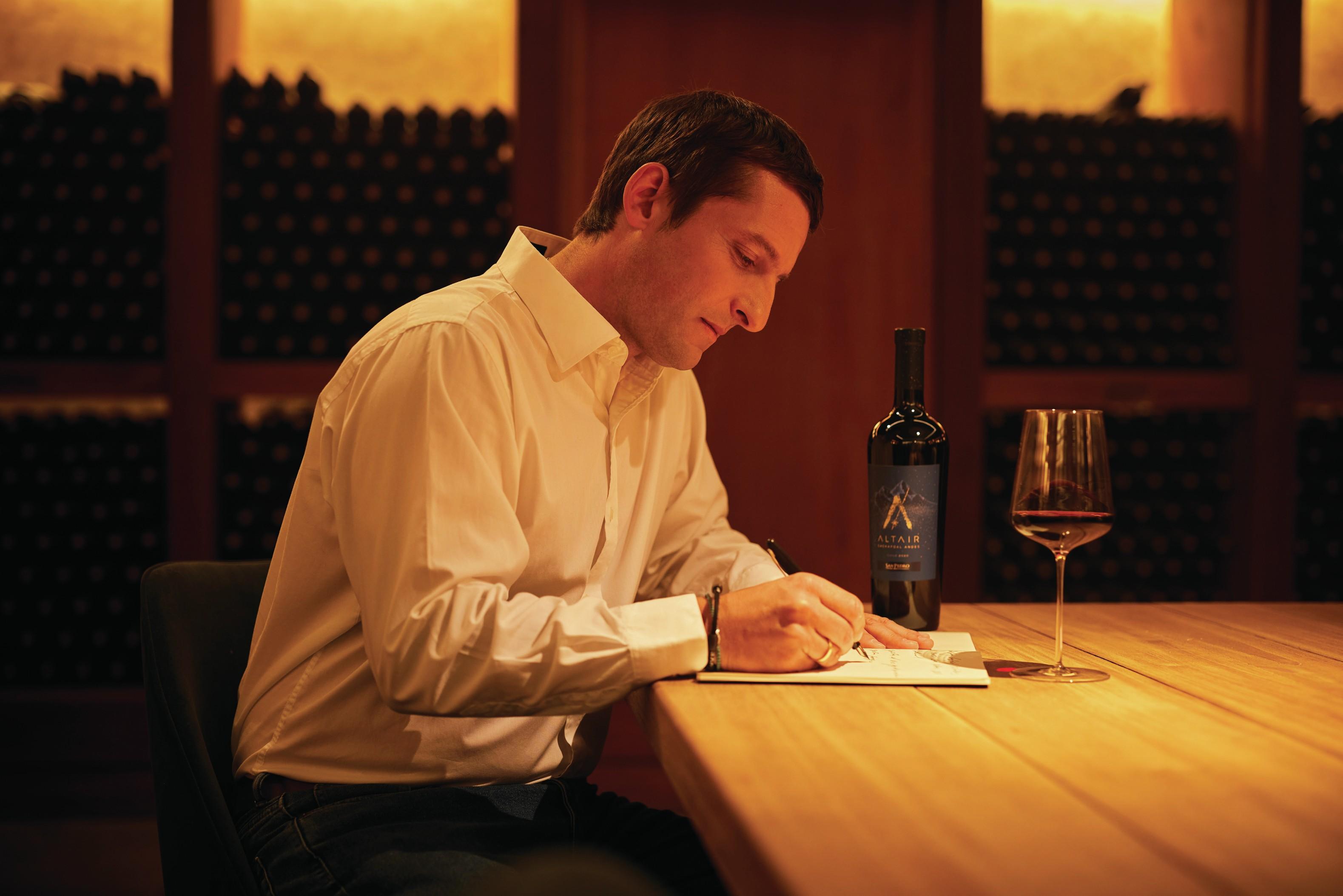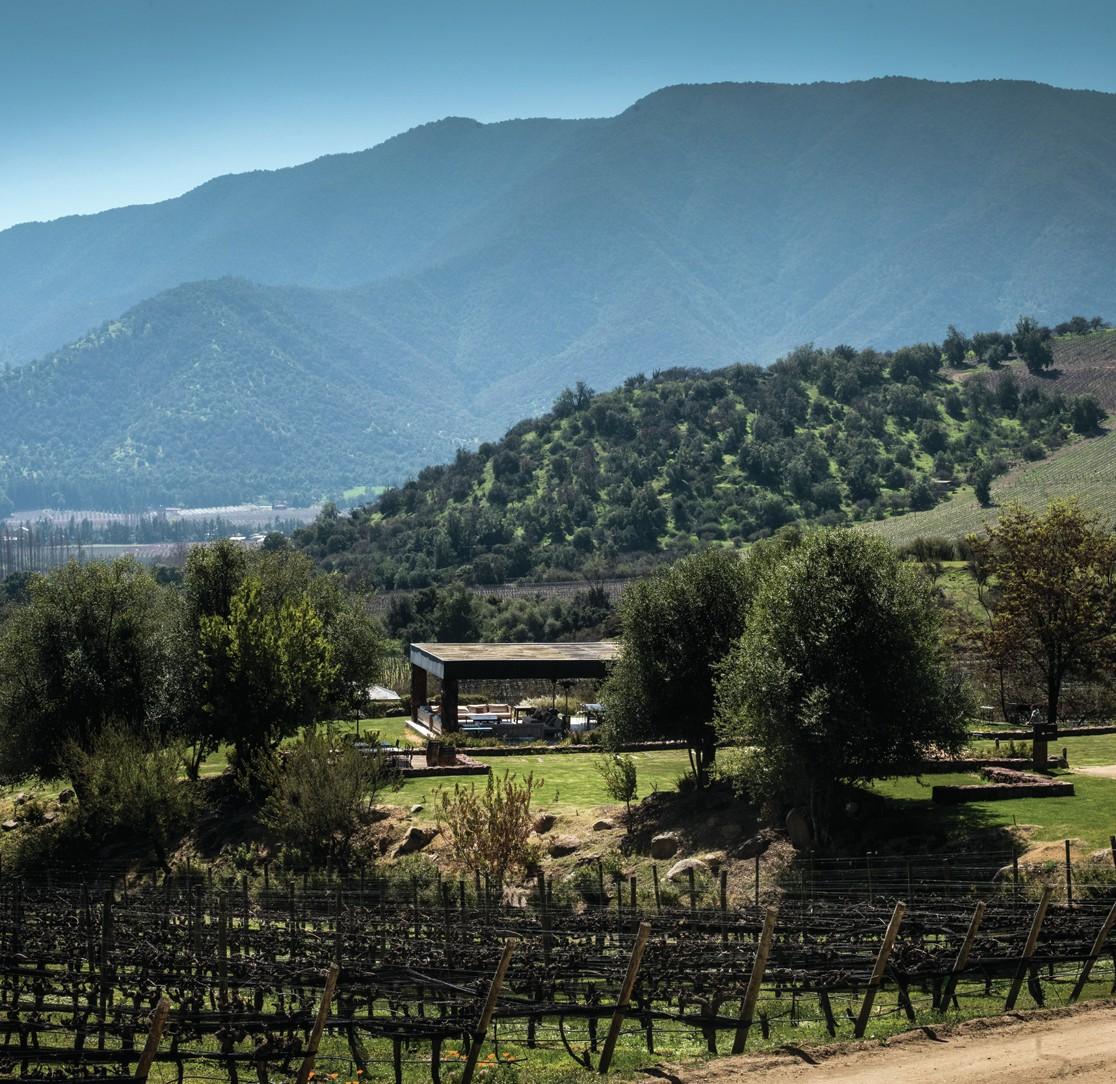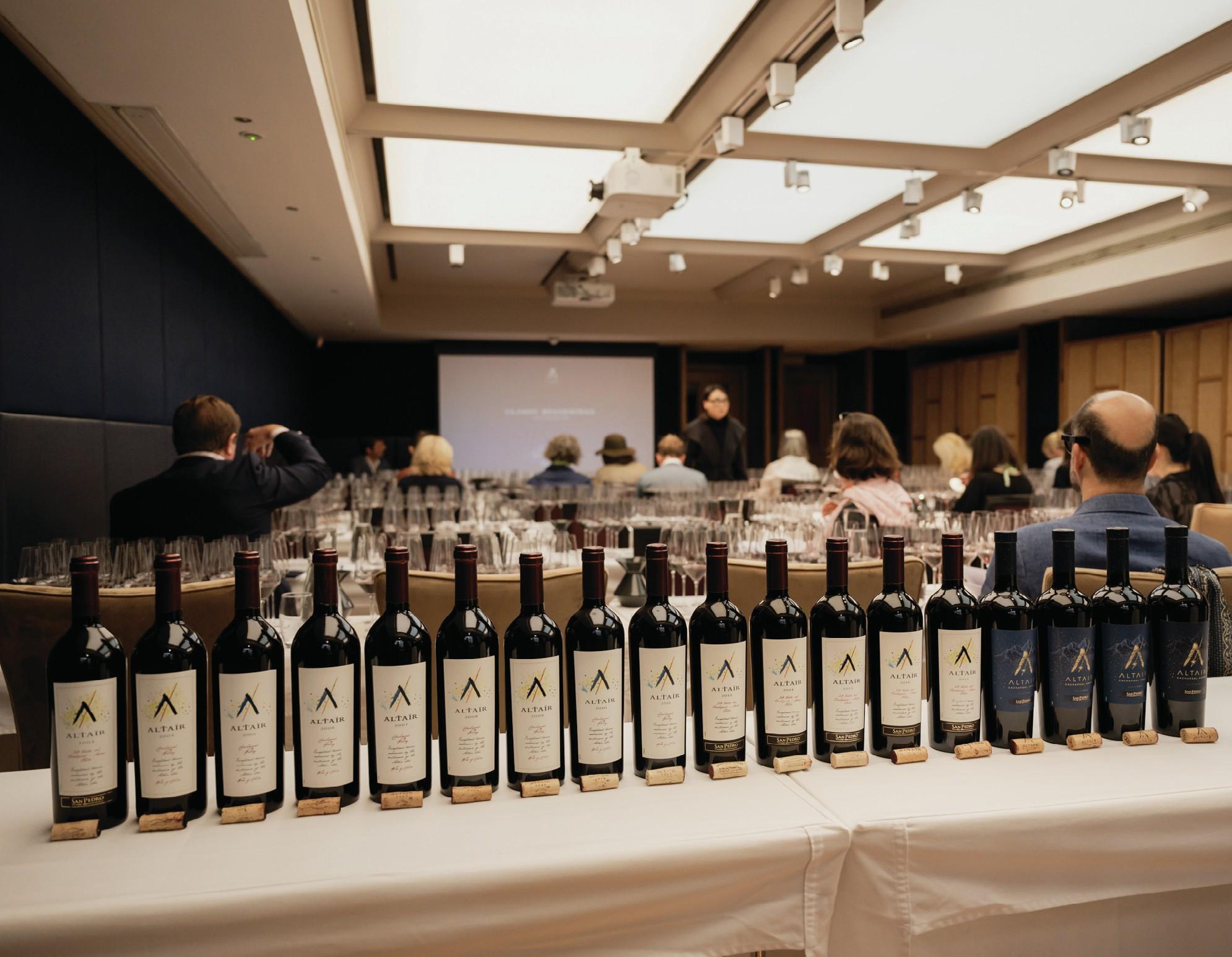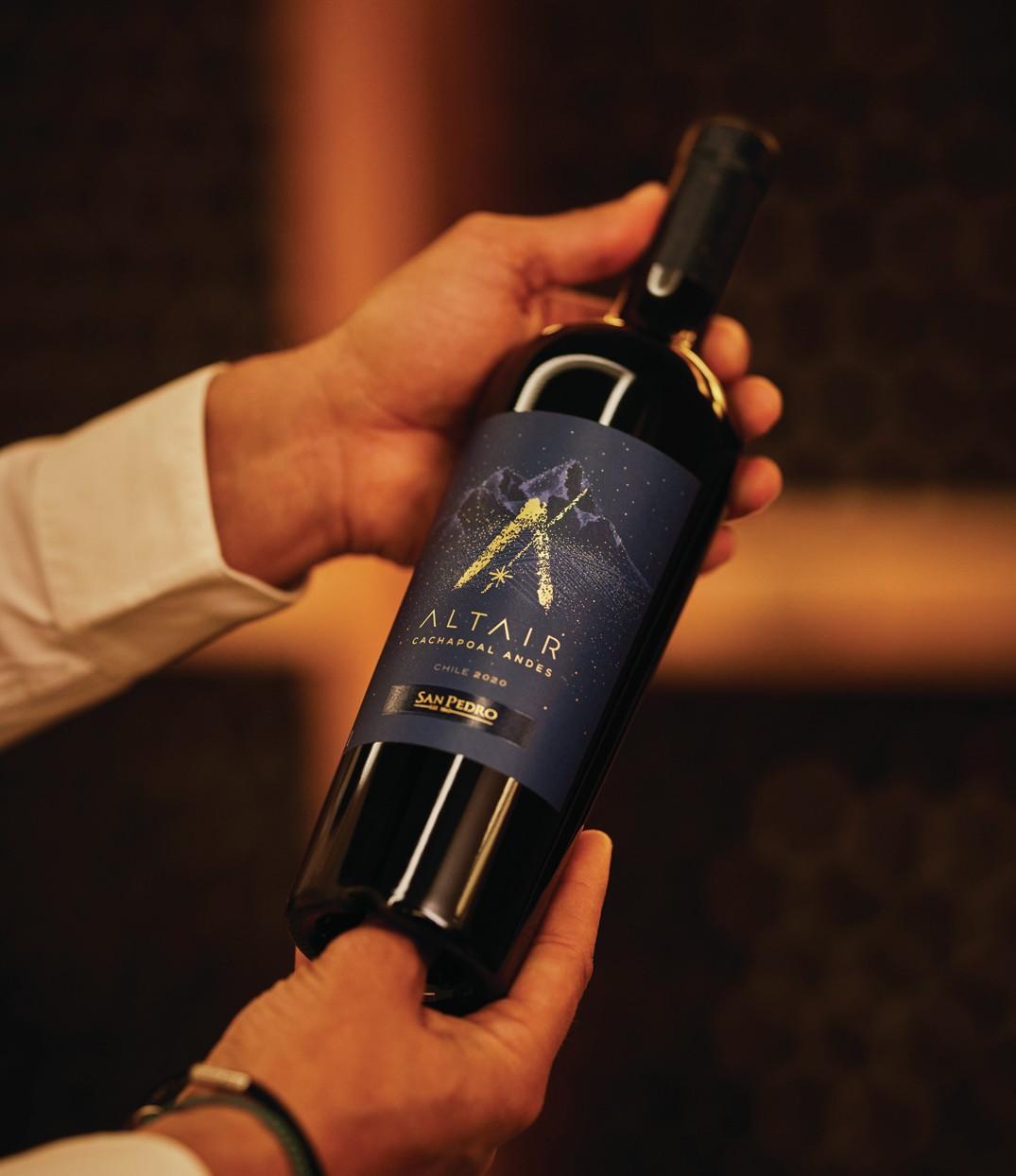Why Altair still shines bright 20 years on
After more than 20 years, Chilean icon and Cabernet blend Altair has entered a new era that merits the attention of wine lovers, reports Patrick Schmitt MW.

IN THE category of high-end reds from South America, Altair – the finest expression from Viña San Pedro – stands out for a number of reasons, which were outlined at a recent masterclass in London, headed by winemaker Gabriel Mustakis, with the support of Chilean wine specialist Alistair Cooper MW.
With more than 20 years of history, the brand is becoming an established force in the niche world of pricy, age-worthy fine reds from Chile, although it differs from its competitors, as both presenters pointed out at the event, which was held at 67 Pall Mall on 12 September.
Notably, it’s not from the more famous source regions of Chilean wine icons, which are the Maipo and Colchagua and, as a result, is perhaps not so squarely in the spotlight as some highly renowned Chilean wines.
But that makes it an exciting discovery for collectors getting to know the top-end wines from Chile, and Altair is certainly a find worth making, as proven by an exceptional tasting, which took the UK trade and press through the brand’s stylistic stages over the past 20 years, starting with the 2003 vintage.
Highlighting the motivation for such an event, Cooper explained: “The only way to really understand a single estate wine is to do a vertical tasting.”
He added: “Today’s tasting is about the different stages of Altair ’s evolution, and we have broken that up into five bitesized flights, from the French influence at the beginning, to Gabriel’s stamp and vision since he joined in 2018.”
Before the sampling began, Cooper introduced the estate, pointing out that Altair is sourced from vineyards around 500 metres above sea level in the Andean foothills, noting that the Cachapoal Valley lies between Maipo and Colchagua, with the latter region found further south.
Cool nights
Mustakis was at pains to stress that the area doesn’t suffer from heat spikes, while benefitting from warm days and cool nights which, he said, “is important for the mouthfeel and the retention of a low pH – we don’t have conditions that burn the acidity”.
As for rainfall, the estate is irrigated, with annual precipitation averaging 300mm over the last 10 years, although levels have been higher in the past two years, according to Mustakis.
Helpful for understanding the type of wines produced in this upper part of the Cachapoal Valley, said Mustakis, is to consider the number of growing degree days, a measure of heat accumulation used by growers and the basis of the Winkler Scale, which classifies regions into five climates.
He recorded: “In 2022-23 we had around 1,777 growing degree days, which puts us in the lower part of Winkler 3 and upper part of Winkler 2, which is a really good place to be for wine production.”
Affecting the climate are also the different aspects at the property, with slopes facing north and south, affecting not only the warmth and amount of sunlight that reaches the vines, but also the water levels in the soils – with shadier, south-facing sites being naturally wetter. Adding to the impact of aspect and climate for making fine reds is the nature of the soils at the estate, which covers around 120 hectares, although only the best sites are used for making Altair.
Detailed mapping
Knowledge of the site has always been high, but this was augmented following a detailed mapping of the site in 2015, which drew attention to detailed changes in the soil composition over space.
Particularly “special”, according to Mustakis, are the “rocky colluvial” sites, which are free-draining and feature large stones, making the vineyards on this soil type “especially good for Cabernet Sauvignon”, he said.
Another soil type, termed “balanced colluvial” by Mustakis, comprises smaller rocks with a higher clay content, giving wines with “more mouthfeel”, a character that suits Cabernet Franc.
Elsewhere, one can find intrusive rocks that are mainly basalt and volcanic in origin, which Mustakis said are more fertile, noting that “Carmenere and Syrah work best here”.
At this point it was time to start sampling the wines, starting with the oldest vintage, which formed part of the initial stage of Altair winemaking, spanning 2002 to 2006 – termed “classic beginnings” by Mustakis.
Explaining the description for this period, Mustakis said that it related to the origins of Altair, which was a joint venture with Saint-Emilion’s Château Dassault, with the Chilean label made with the support of Bordeaux wine consultant Pascal Chatonnet – although the full-time winemaker for the new label was Chilean Ana María Cumsille.
Speaking about this era, Mustakis said: “There was a huge influence from France on how to do high-end wines.” Agreeing, Cooper commented: “There was a strong Bordeaux stamp on the wines,” noting, for example, that all the wines during these early vintages were aged for 15 months in new French oak barriques.

About Altair
The Cachapoal Andes winery was founded in 2001 and it is located at the foot of the Andes mountain range in the Cachapoal Valley. This winery is focused on making Viña San Pedro’s fine wines: Altair and Cabo de Hornos.
Today Altair is made from around 120 plots of vineyards from the property, each of which is vinified separately. The majority of the wine is sourced from the original 70 hectares of plantings that were made in 1998, with all the varieties planted piè franco. Cabernet Sauvignon is the dominant grape at the estate, which also contains plantings of Carmenere, Syrah, Petit Verdot and Cabernet Franc. However, total plantings at the property are now 150ha, and include trials of Touriga Nacional and Mourvèdre. Initial plantings of grapes such as Merlot and Sangiovese have since been grafted over to other, better-performing varieties.
The production of Altair is, on average, 3,500 cases annually (although there was no wine in 2012 because the quality of wine was not deemed sufficiently good).
As new plantings mature, the property hopes to increase the production of Altair to 5,000 cases.
The tasting in fact began with the 2003 vintage, because the inaugural 2002 was not made at the estate, and it was felt that the sampling exercise should focus entirely on wines produced at the winery on the property.

What was notable about these initial wines was how well they had aged.
While the tannin structure remained firm, it provided these mature expressions with a strong frame, which surrounded a core of ripe, fleshy red fruit. In turn, this had now become dried in character, and deliciously so – even with 20 years of age, Altair was still generous and lively.
Commenting on the first flight of wines, Cooper said: “They were made in a classical Bordelais style, and they are still remarkably youthful.”
The vines would have been young, of course, with the first 70ha of the estate planted in 1998, which explained the greater concentration seen in Altair from 2005 onwards, as the vineyards started to become established, bringing more intense fruit flavours.
Partner Content
The Dassault family’s involvement came to an end in 2006, leaving Viña San Pedro as sole owners of Altair, and Cumsille in charge of the winemaking and blending.
This explained the next flight, featuring wines from 2007 to 2011, and dubbed “forging identity”, with Cumsille “taking charge and making her mark”, according to Cooper, although Chatonnet remained in place as a consultant.
Marking this set of wines was a strong fruit expression – partly because they were younger – but also because there was more concentration, blacker fruit and less new oak, with the proportion falling to 50% during this period. The tannins also seemed finer, even softer, in these wines, which Mustakis said was due to better understanding of how to manage the vineyard to ensure there is less “stress” in the plants, as well as softer winemaking techniques to extract fewer phenolics from the skins of the grapes.
“Ana María went for a cold soak, then a low extraction during fermentation, and a long skin contact afterwards,” explained Mustakis, with Cooper adding: “She did not have a prescriptive French approach.”
Moving onto the third flight of wines, spanning vintages 2013 to 2017 – Altair was not made in 2012 – the next stage was called “deepening our roots”.
New team
Notable about this period was a new winemaking team, with Gonzalo Castro replacing Cumsille as head winemaker, supported by Marco Puyo as technical director. Meanwhile, Chatonnet retired from his role as a consultant.
This era also saw an in-depth study of the estate, with Mustakis commenting that “we started to study more the place, and do selections and explorations, which is why we call this stage ‘deepening our roots’”.
By measuring soil electrical conductivity and monitoring the vine canopy, the team at the estate were able to better understand areas of vigour and stress, and “how to get the best from each plot”, as well as the top-performing grapes. Indeed, this period saw a reduction in and sometimes total absence of Carmenere in the blend, although that would later change with a better understanding as to how best to manage the grape to eliminate pyrazines – those capsicum-like flavours that can beset the variety when it’s overcropped or unripe. In essence, this period saw Altair benefit from “softer, sweeter tannins” and a “more fruit-forward profile”, according to Mustakis, with Cooper describing the “learning process” of these vintages yielding a “riper, more rounded” style of wine.
Commenting from the audience, renowned wine writer Margaret Rand said that from 2015 onwards, the wines “are really impressive; the tannin management is better and there is real confidence in the style”.
Following this was another stage in Altair ’s development, which covered the vintages of 2018, 2019 and 2020, and this was named “evolving into purity”.

Crucially, this period started with the arrival of Mustakis at the Cachapoal Andes winery, with his focus on “sharpening” the identity of Altair with a greater focus on Cabernet Sauvignon as the dominant grape, as well as earlier harvests and longer, softer extraction periods, helped by lowering fermentation temperatures.
As with any fine wine, the quality comes from lots of small improvements, and Mustakis has implemented much change for the better, without making drastic alterations to the sourcing, vine management or winemaking.
However, he said: “My thinking is to show the place, its purity and natural essence,” which he said includes “perfumed” fruit, “naturally high sugar levels”, and flavours that range from “dark fruits to violets”.
Notably, he said that he became aware that the Cabernet Sauvignon from the property can be harvested relatively early without exhibiting any green flavours, while bringing the wines an appealing fresh acid and fine tannic structure –“which you just need to protect, so you don’t want to do too much work”.
Comments on the wines under Mustakis’ control were complimentary,with attendees observing the “tension” in Altair from 2018 onwards, even in a warm vintage such as 2020. As Rand highlighted: “The wines have definition and transparency: it’s been one hell of a transformation.”
Consolidation era
Finally, there was a concluding vintage to taste, which is the current release, hailing from 2021. Representing the start of what was called “the consolidation era”, this was described as a “synthesis of everything we’ve learned during the past 20 years”, remarked Mustakis.
The wine was outstanding, with Cooper declaring it a personal favourite, with “purity, focus and clarity” – adding: “You could drink it now, but it will age for a long time.”
Mustakis also expressed a satisfaction with his achievements, commenting: “I feel very comfortable with what we are getting,” speaking of the site, which is now operating at its peak.
Continuing, he said that “2021 was an incredible vintage and, in 2021, the Cabernet Sauvignon was amazing”. But he’s not stopping there, with “the consolidation era” seeing new plantings coming on stream, and some trials taking place too – notably with Touriga Nacional and Mourvèdre – as well as new soil management techniques, including ‘regenerative’ approaches, in which the ground is never disturbed, “generating more life in the soil, and storing carbon”.
In summary, he told db: “We are in a good position now, but we need to be very precise to face different vintage conditions, but we are not planning on changing the style; we just want to show the brightness of the place.”
With that said, the name of the wine seems particularly apt: Altair is the brightest star in the constellation of Aquila.
Altair 2021: about the wine
The 2021 harvest was declared to be “exceptional” by the property, “resulting in wines with outstanding polyphenolic concentration and a great fruity expression”.
ABV: 14.5%
TA: 5.25g/l
pH: 3.59
Blend: 90% Cabernet Sauvignon, 10% Cabernet Franc
Ageing: 22 months. First 16 months, 70% matured in French oak barrels (50% new and 20% second use or older); 25% in foudres; the remaining 5% in a Galileo vat. Following the completion of the final blend, the wine was then aged in different-sized foudres for six months.
TASTING NOTE:
An opaque appearance, with aromatics of pristine black berry fruit with some ripe raspberry and blackcurrant too, allied to inviting notes of toasty oak. In the mouth, the sensation is pure, fleshy and refreshing, with layers of juicy fruit, from cherry and plum to blackberry and currant, even wild strawberry. Complementing these characters are flavours of cracked black pepper, fresh cream and charred bread, along with a dry, cedar-like note. Ripe but bright, and finely structured, this is a generous red with elegance. It’s also a wine that’s delicious now, but has the depth and tannin frame to age well over the next two decades.
(Patrick Schmitt MW, September 2024)
Related news




